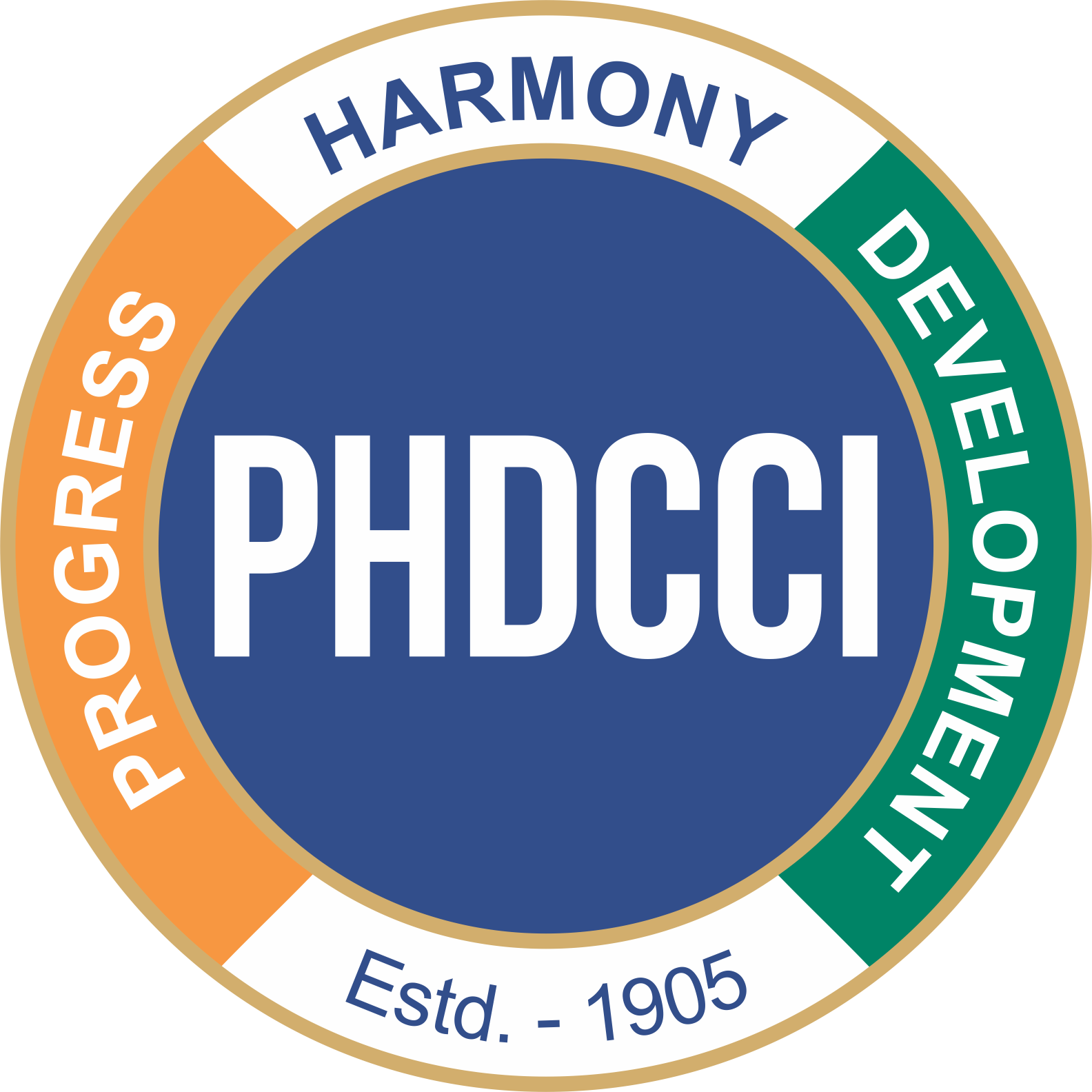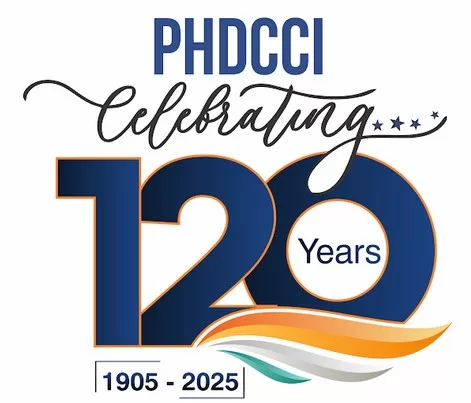No. PR- 283 March 25, 2021 New Delhi ‘Convergence of Digital & Physical products is paving way for Industry 4.0’ The availability of ubiquitous digital communication infrastructure & services and increasingly connected population of active users of digital technology are the pre-requisites for Fourth Digital Revolution , deliberated Mr. S.K Gupta (ITS), Secretary, Telecom Regulatory Authority of India in an interactive webinar organized by PHD Chamber of Commerce and Industry on ‘Growth of India’s Digital Landscape: The Atmanirbhar Way’. Mr. Gupta said that the business model is likely to change and telecom is going to be one of the critical infrastructure to provide various services that will facilitate investment and growth of the sector. The post pandemic era has brought a sea change in the way, we live, work or interact. There has been exponential growth of the telecom network and we are hugely dependent on the import of telecom equipment. He added that in this evolving situation for achieving socio-economic growth, there was a need for Atmanirbhar Bharat, which is a well planned and focussed approach on indigenous production and this will be the way forward. He also elaborated on how the existing supply chains are getting disrupted and new opportunities are emerging in the telecom field due to this clarion call of our Hon’ble PM. India is a pioneer of software development. He added that given the skill base in India, the scale of domestic market and technology orientation, India presents an attractive option for the global manufacturers. Our government is also encouraging investments through relaxed FDI norms and PLI policies. Fiberization of the network will be the focus area. Substantial investment is also required in data centres; protection of private data and data privacy is going to play an important role in the industry. While India has taken a leap in the digital space, a lot more needs to be done and the government-public sector & private sector needs to join hands for the same added Mr. Gupta. Mr. Sarvesh Singh, Chairman & Managing Director, Bharat Broadband Nrwtork Ltd shared his views on how data and fibre will drive India’s digital landscape further. He also spoke about how Bharat Net will extend broadband to rural India by connecting the gram panchayats of the country and broaden opportunities & upgrade services. This will be done primarily by laying optical fibre. It is going to enable rural India to be Atmanirbhar and also enable our telecom industry to become self-reliant in the times to come. He added that Bharatnet is completely using indigenous technology only. He also said that using 5G will be able to provide differentiated services and applications as it can be configured both in high-speed connections, virtual streaming, IoT applications too. Even our government is helping the industry in the best possible way with schemes like PLI, procurement from trusted sources etc to become Atmanirbhar. Mr. Ashutosh Vasant, Director-POM, Railtel Corporation of India Ltd said that for creating an Atmanirbhar Bharat, we need to create democratization of wealth creation opportunities and democratization of health and happiness. We need reliable, high-capacity, high resilience provisioning done without requesting any outside body. We have exclusive right of way and wonderful fibre network across the country by Railtel along railway tracks that we should be proud of added Mr. Vasant. He said that we need a resilient and reliable network, integrating all the assets, across the country so that all the operators can only concentrate on investments in creating reach to the actual customers. Creating a responsive organization which is transparent, accountable and one that meets the needs of the market is the need of the hour. He said that we have to combine our efforts and work towards Digital India. Mr. Sanjeev Shriya, Regional President, Idemia Syscom India Pvt Ltd shared his views on how without government support, Atmanirbhrta cannot be achieved in the same measure. With schemes like PMI, PLI, promoting indigenous technologies like start-ups are all now directed towards engaging the industry and young entrepreneurs towards being self-reliant. We are in a beneficial ecosystem where there is momentum coming from the demand of the market but also from the push by policy making. He spoke of how India can exceed in both hardware and software and has been leading in digital landscapes like IoT, OTT etc. He also deliberated that whole space of IoT is a very fertile space and needs to be implemented at the grass-root level. Mr. Sunil Joon, Chief Product Officer, Micromax Infomatics Ltd spoke about how OTT, education technology, media, digital economy boomed due to the pandemic. Adhar- the biggest digital identity project in the world, UPI- an app that helped make digital transactions, Jan Dhan Yojana, E-KYC etc have all given momentum to Digital India. He deliberated that the digital adoption has increased to a large extent last year with more than 200 million active whatsapp and facebook users in India. He was also of the opinion to include un-serviced local markets and local businesses into e-commerce which would improve Digital India. He said that start-ups and technology- enabled companies grow very fast. He elaborated on how cyber security is a concern and regulation of policies is required. He also added that the combination of 5G services and AI will be a game changer and provide significant benefit to the telecom industry. Mr. Vikram Tiwathia, Deputy Director General, COAI discussed as to how the combination of the government, the regulators and private enterprises has brought India to this position in the world. He spoke on how the mobile phones have completely transformed India’s digital landscape in the last few years. The rapid pace of the mobile network has shaped India’s digital landscape. He stressed that the rural areas need improvement in digital services. He also spoke about how the telecom industry kept the country going during the pandemic. He added that fiberization is needed; data archiving and labelling is required; best quality telecom equipment with best price is needed for India’s digital landscape to get better. Mr. Sanjay Aggarwal, President, in his address threw light on how the pandemic has accelerated the adoption of new and digital ways of working practices. The work ahead will be all about striking a balance between machine-driven and human-centric work. He also spoke about how India’s digital transformation could create significant economic value for consumers, businesses, microenterprises, farmers, government, workers and other stakeholders making India Atmanirbhar. He added that 5G revolution is likely to generate new growth avenues, boost industrial productivity and has the potential to transform the socio-economic fabric of the country. Mr. Sandeep Aggarwal, Mentor Telecom Committee in his theme address spoke about how India’s telecom sector has undergone a complete metamorphosis in the last 25 years. He deliberated in detail about the infrastructure investment in digital technology; the wave of 5G technology; internet connectivity; growth of smart-phones and how the rapidly changing economic and social landscape in India requires more continuous investments in physical, digital, and policy infrastructure. Mr. Alok Mukherjee, Co-Chairman, Telecom Committee, PHD Chamber of Commerce and Industry proposed the formal vote of thanks to the panellists for their insightful views on the growth of India’s digital landscape. The webinar was moderated by Dr. Yogesh Srivastav, Assistant Secretary General, PHD Chamber of Commerce and Industry. It was supported by Idemia Syscom India Pvt Limited and was successfully attended by many senior members of PHD, Embassy officials and stalwarts from the telecom industry. Ends Media Division PHD Chamber of Commerce and Industry






